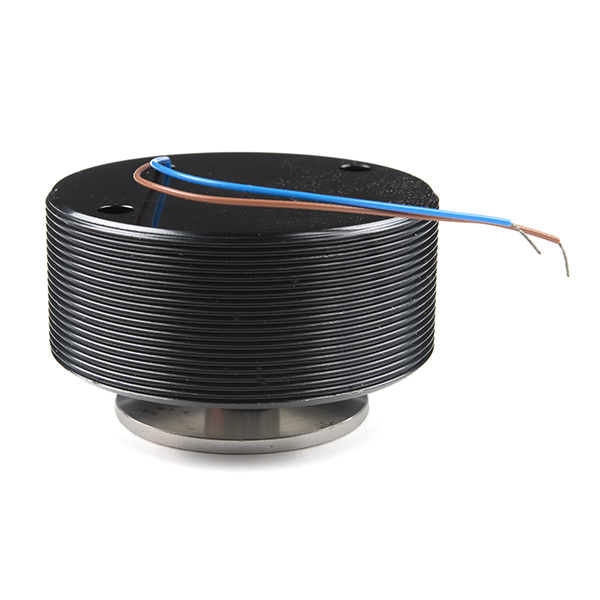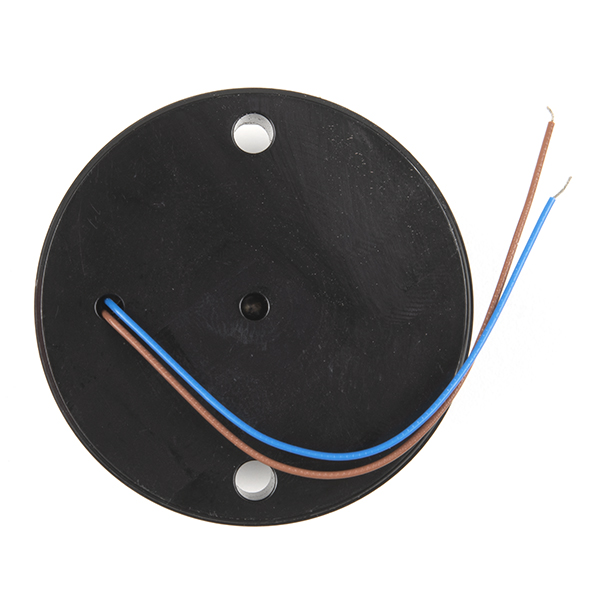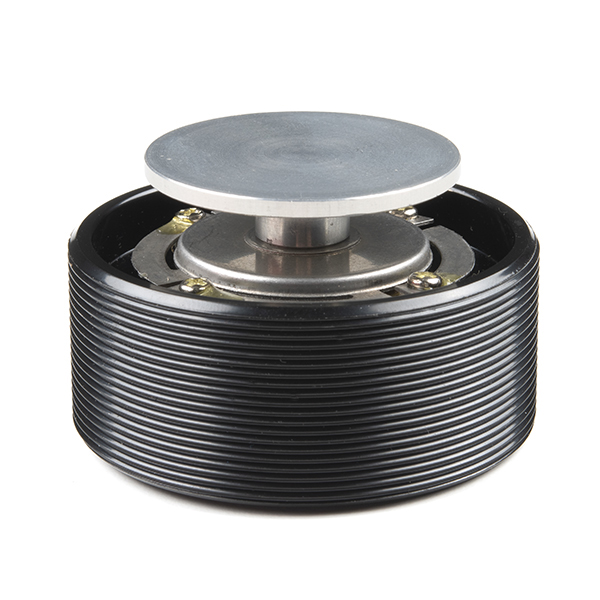Surface transducers give you the awesome power to turn almost any surface into a speaker. They're essentially just a speaker except instead of a cone, the coil is attached to a pad that conducts the vibration into whatever you press it against. Hook it up to an audio source and press it against the nearest table, wall or cardboard box. You can even put it against your head and play music directly into your skull (the ultimate surround sound). This transducer comes with an adhesive magnet that can be attached to the base.
- 1x Transducer
- 1x Screw on base
- 1x Adhesive Magnet
- 50mm Diameter, 31mm Tall
- Weight: 0.51526 lbs.
- Power: Nominal input 10 W, Maximum input 25W
- Nominal Impedance: 4Ω±15% test@200Hz1v
- Lowest Resonance Frequency: 58Hz±20% (@ 1.0 V)
- Output Sound Pressure Level: 85±3 dB(100、400、800、12000Hz medium value @1m 10w)
- Distortion: 5% less @ 5W 1000Hz
Surface Transducer - Large Product Help and Resources
Qwiic Speaker Amp (TPA2016D2) Hookup Guide
September 29, 2022
The SparkFun Qwiic Speaker Amp includes the Texas Instruments TPA2016D2 stereo, filter-free class-D audio power amplifier. This tutorial will help you get started and configure the amplifer settings using an Arduino microcontroller.
Core Skill: Soldering
This skill defines how difficult the soldering is on a particular product. It might be a couple simple solder joints, or require special reflow tools.
Skill Level: Noob - Some basic soldering is required, but it is limited to a just a few pins, basic through-hole soldering, and couple (if any) polarized components. A basic soldering iron is all you should need.
See all skill levels
Core Skill: Electrical Prototyping
If it requires power, you need to know how much, what all the pins do, and how to hook it up. You may need to reference datasheets, schematics, and know the ins and outs of electronics.
Skill Level: Rookie - You may be required to know a bit more about the component, such as orientation, or how to hook it up, in addition to power requirements. You will need to understand polarized components.
See all skill levels
Comments
Looking for answers to technical questions?
We welcome your comments and suggestions below. However, if you are looking for solutions to technical questions please see our Technical Assistance page.
Customer Reviews
4 out of 5
Based on 1 ratings:
I need to keep testing
It's a nice product for sure. I ordered 3 of them, first to do a little immersive sound system connected to furniture of a room. Second project is to do a plate reverb. The only thing I dislike about this unit (and that I need to keep testing) is that it seems to have a serious ringing resonnant frequency around 3k, which is quite unpleasant. It did occur almost everywhere I tried. The 2 options I found to counter this problem so far were with experimenting with different connexion plates attached to it, or to use an EQ to kill the resonnant frequency.




